Can I Wear Glasses After a Nose Job?
Quick Answer: Most surgeons recommend waiting 4-6 weeks before wearing glasses after rhinoplasty. During this time, glasses can put pressure on the healing nose bridge and potentially affect your results. Contact lenses are the safest alternative, though some patients use special techniques like taping glasses to the forehead or using lightweight frames with minimal nose contact.
You’ve just had rhinoplasty surgery, and everything went smoothly. But here’s the thing—you wear glasses every single day, and suddenly you’re facing weeks without wearing glasses after rhinoplasty. That’s what many patients find surprising about the recovery process. The question of when you can wear glasses after rhinoplasty isn’t just about convenience; it’s about protecting your investment in your new nose.
In my practice, I’ve observed that this concern comes up in nearly every rhinoplasty consultation. Patients who depend on glasses for daily activities—and let’s face it, that’s most people who need vision correction—want to know exactly how long they’ll need to go without their frames. The answer isn’t always straightforward, though. It depends on your specific procedure, healing rate, and your surgeon’s technique.
This aspect is often overlooked in pre-surgery discussions, but it’s crucial for planning your recovery. Most people don’t realize that the pressure from glasses can actually shift the delicate nasal bones and cartilage during those critical first weeks of healing. That’s where things get interesting—because while the general guideline is 4-6 weeks, individual cases vary significantly.
Why Glasses Matter During Rhinoplasty Recovery
Let me explain what’s happening beneath the surface. When you wear glasses, they rest on the nasal bridge—that bony structure at the top of your nose. After rhinoplasty, this area is particularly vulnerable. The bones might have been broken and repositioned, or the cartilage reshaped. Either way, the tissues are healing, and they need stability.
Here’s what you need to know: glasses create constant pressure on the nasal bridge. Even lightweight frames can exert enough force to potentially affect your results. This pressure can cause indentations, shift the nasal bones, or create asymmetry—especially in the first few weeks when everything is still settling into place.
That said, the risk isn’t uniform across all patients. If you had a tip-only rhinoplasty without any work on the bridge, your surgeon might give you the green light earlier. But if your procedure involved osteotomies—breaking and repositioning the nasal bones—you’ll need to be more careful. The healing timeline for bone is different from soft tissue, and it needs that extra protection.
Wearing Glasses After Rhinoplasty: The Science Behind the Waiting Period
During the first two weeks after surgery, your nose is essentially in a fragile state. The bones are beginning to heal, but they haven’t formed the strong connections they’ll eventually develop. According to research published in facial plastic surgery journals, nasal bones typically need at least 3-4 weeks to develop sufficient stability to handle external pressure.
But here’s the catch—that’s just the bones. The soft tissues, including the skin and underlying structures, are also healing. Swelling is at its peak during the first week, and it gradually subsides over the following weeks. Placing glasses on a swollen, healing nose can create pressure points that might affect the final contour.
Meanwhile, the cartilage—especially if it was reshaped or grafted—needs time to settle into its new position. Cartilage doesn’t heal the same way bone does; instead, it relies on the surrounding tissues to stabilize it. Any external pressure during this stabilization period can potentially shift things in ways you don’t want.
Timeline: When Can You Safely Wear Glasses?
So when exactly can you put those glasses back on? The timeline varies, but here’s what most surgeons recommend based on typical healing patterns.
Weeks 1-2: Absolutely No Glasses
During the first two weeks, you should avoid glasses entirely. This is when your nose is most vulnerable, and even minimal pressure can cause problems. Your surgeon will have placed a cast or splint on your nose, which makes wearing glasses impossible anyway. But even after the cast comes off—usually around day 7—you’ll need to continue avoiding glasses.
That’s what many patients find challenging. You’re dealing with post-surgery discomfort, swelling, and now you can’t see clearly either. But this is non-negotiable. The risk of affecting your results is simply too high during this period.
Weeks 3-4: Proceed with Caution
Some surgeons might allow very limited, supervised glasses use starting around week 3, but this is highly dependent on your specific case. If your surgeon gives you permission, it’s usually with strict guidelines: only for short periods, using the lightest possible frames, and with special techniques to minimize pressure.
In many cases, though, surgeons prefer to wait until week 4 or even week 5 before allowing any glasses use. The extra week makes a significant difference in healing stability, and it’s worth the temporary inconvenience.
Weeks 4-6: Gradual Return to Normal
By week 4, most patients can begin wearing glasses again, but with modifications. Your surgeon will likely recommend starting with just a few hours a day and gradually increasing the duration. You might also need to use techniques to distribute the weight differently—we’ll cover those in a moment.
By week 6, many patients can return to normal glasses use, though some surgeons prefer to wait until week 8 for complete clearance. It really depends on how your healing is progressing and what type of rhinoplasty you had.
Important: Always follow your specific surgeon’s recommendations. These timelines are general guidelines, but your surgeon knows the details of your procedure and can give you personalized advice based on your healing progress.
Alternatives to Glasses During Recovery
Okay, so you can’t wear glasses for several weeks. What are your options? Here’s where things get practical.
Contact Lenses: The Gold Standard
Contact lenses are, without question, the best solution during rhinoplasty recovery. They provide clear vision without any pressure on your nose, and you can start wearing them as soon as you feel comfortable—usually within a day or two after surgery, once any anesthesia effects have worn off.
If you’ve never worn contacts before, this might seem daunting. But here’s the thing: many patients find that the recovery period is actually a great time to try them. You’re already focused on your recovery, so learning to insert and remove contacts becomes part of your new routine.
That said, if you have dry eyes or other conditions that make contacts uncomfortable, this might not be the best option for you. In that case, you’ll need to explore other alternatives.
Wearing Glasses After Rhinoplasty: Taping Glasses to Your Forehead
Some patients use medical tape to secure their glasses to their forehead, keeping them elevated above the nose. This technique can work for short periods, but it’s not ideal for long-term use. The glasses can slip, the tape can irritate your skin, and it’s generally uncomfortable.
If you do try this method, use gentle medical tape designed for sensitive skin, and only for brief periods when you absolutely need clear vision. Don’t rely on it as your primary solution.
Lightweight Frames with Minimal Contact
Once you get clearance from your surgeon—usually around week 4—you might be able to use very lightweight frames that make minimal contact with your nose. Some patients find that certain frame styles, particularly those with nose pads that can be adjusted to sit higher, work better during the early recovery phase.
But even with lightweight frames, you’ll need to be careful. Start with just a few minutes at a time, and pay attention to any pressure or discomfort. If you notice any changes in your nose’s appearance or feel unusual pressure, stop immediately and consult your surgeon.
Wearing Glasses After Rhinoplasty: Special Considerations for Different Rhinoplasty Types
Not all rhinoplasties are created equal, and the type of procedure you had affects when you can safely wear glasses. Let me break this down.
Open vs. Closed Rhinoplasty
Open rhinoplasty involves an external incision across the columella—that strip of tissue between your nostrils. This approach gives surgeons better visibility and access, but it might mean slightly longer healing time. Closed rhinoplasty, where all incisions are inside the nose, typically has a faster initial recovery, though the glasses restrictions are usually similar.
The key difference isn’t so much the approach itself, but rather what was done during the procedure. If your surgeon performed significant bone work, you’ll need to be more careful regardless of whether it was open or closed for wearing glasses after rhinoplasty.
Primary vs. Revision Rhinoplasty
Revision rhinoplasty—surgery to correct or improve a previous rhinoplasty—often requires more careful handling. The tissues have already been operated on once, which can make them more delicate. Patients undergoing revision procedures might need to wait longer before wearing glasses, sometimes up to 8-10 weeks.
This is something your surgeon will discuss with you during your consultation. If you’re having revision surgery, make sure to ask specifically about glasses restrictions, as they might be more stringent than with a primary procedure.
Wearing Glasses After Rhinoplasty: Ethnic Rhinoplasty Considerations
Ethnic rhinoplasty, which focuses on preserving or enhancing ethnic features while improving function and aesthetics, might have different considerations. Some techniques used in ethnic rhinoplasty involve more extensive work on the nasal bridge, which could extend the glasses-free period.
But again, this varies by individual case. Your surgeon will provide specific guidance based on your unique anatomy and the techniques used in your procedure.
Protecting Your Results: Best Practices
Once you do get clearance to wear glasses again, you’ll want to protect your investment. Here are some strategies that can help.
Choose the Right Frames
Not all glasses are created equal when it comes to nose pressure. Frames with adjustable nose pads are generally better than those with fixed nose pads or no pads at all. The adjustable pads allow you to position the glasses so they make minimal contact with your healing nose.
Lightweight materials like titanium or certain plastics are preferable to heavy frames. The less weight resting on your nose, the better. Some patients even switch to lighter frames specifically for the recovery period, then return to their preferred style once healing is complete.
Frame width matters too. Wider frames distribute weight across a larger area, which can reduce pressure points. Narrow frames concentrate all the weight on a smaller section of your nose, which isn’t ideal during healing.
Wearing Glasses After Rhinoplasty: Distribute Weight Strategically
Even with the right frames, you can take steps to minimize pressure. Some patients find that adjusting the nose pads to sit slightly higher than normal helps for wearing glasses after rhinoplasty. Others use small pieces of padding—like those designed for glasses—to create a buffer between the frame and their nose.
The key is to ensure the weight is distributed as evenly as possible and that no single point bears too much pressure. Your nose is still settling into its final shape, and uneven pressure can potentially cause indentations or asymmetry.
Take Regular Breaks
Even after you get clearance to wear glasses, don’t wear them 24/7 right away. Start with short periods—maybe an hour or two at a time—and gradually increase the duration. This gives your nose time to adjust and allows you to monitor for any issues.
If you notice any discomfort, redness, or changes in your nose’s appearance, take the glasses off immediately. It’s better to be cautious and give your nose a bit more healing time than to risk affecting your results.
Common Questions About Wearing Glasses After Rhinoplasty
Let me address some of the questions I hear most often from patients.
Can I Wear Sunglasses?
Sunglasses follow the same rules as regular glasses—you’ll need to wait until your surgeon gives you clearance. Many patients are surprised by this, especially if they’re planning outdoor activities during recovery. But sunglasses can be even heavier than regular glasses, and they often have larger frames that create more pressure.
In the meantime, consider a wide-brimmed hat for sun protection, or ask your surgeon about prescription sunglasses that you can wear once you’re cleared for glasses use.
Wearing Glasses After Rhinoplasty: What About Reading Glasses?
Reading glasses are typically lighter than full prescription glasses, but they still create pressure on the nasal bridge. The same restrictions apply—you’ll need to wait until your surgeon says it’s safe. If you need reading glasses for close work, consider using a magnifying glass or increasing the font size on digital devices as a temporary solution.
Will My Glasses Fit Differently After Rhinoplasty?
This is a great question, and the answer is: possibly. If your rhinoplasty changed the shape or height of your nasal bridge, your glasses might sit differently. Some patients find they need to adjust their frames or even get new ones that fit their new nose shape better.
But here’s the thing—you won’t know for sure until your nose has fully healed and settled into its final shape, which can take up to a year. Don’t rush out to buy new frames right away. Wait until your surgeon confirms that your nose has reached its final form, then have your glasses adjusted or replaced as needed.
Wearing Glasses After Rhinoplasty: Can Glasses Cause Permanent Damage?
If you wear glasses too soon after rhinoplasty, they can potentially cause indentations or asymmetry that might require correction. In most cases, though, these issues are minor and can be addressed. The key is to follow your surgeon’s timeline and not rush the process on wearing glasses after rhinoplasty.
That said, permanent damage is rare if you’re following your surgeon’s instructions. The real risk is affecting the aesthetic results you paid for and went through surgery to achieve. A few weeks of inconvenience is worth protecting those results.
Working with Your Surgeon
Your surgeon is your best resource for guidance on when to wear glasses after rhinoplasty. They know the specifics of your procedure, your healing rate, and what to watch for. Here’s how to make the most of that relationship on wearing glasses after rhinoplasty.
Wearing Glasses After Rhinoplasty: Ask Questions During Consultation
Before your surgery, make sure to discuss your glasses dependency with your surgeon. Ask specifically about the timeline for your type of procedure, what alternatives they recommend, and what signs to watch for once you do start wearing glasses again.
This is also a good time to discuss any concerns you have about going without glasses. If you drive regularly, work on a computer, or have other vision-dependent activities, your surgeon can help you plan for those during recovery.
Follow Up During Recovery
Don’t hesitate to contact your surgeon’s office if you have questions during recovery. If you’re unsure whether it’s safe to wear glasses for a specific event or activity, ask. It’s better to get confirmation than to risk your results.
Your follow-up appointments are also crucial. Your surgeon will assess your healing progress and can adjust the timeline based on how you’re doing. If you’re healing faster than expected, they might clear you for glasses earlier. If there are any concerns, they might recommend waiting longer.
The Bottom Line: Wearing Glasses After Rhinoplasty
Wearing glasses after rhinoplasty requires patience and planning. The typical timeline is 4-6 weeks, but it can vary based on your specific procedure and healing rate. Contact lenses are the safest alternative during this period, though there are other options if contacts aren’t feasible for you.
The most important thing is to follow your surgeon’s specific recommendations. They know your case better than any general guideline, and their advice is tailored to your unique situation. A few weeks of inconvenience is a small price to pay for protecting your surgical results and ensuring you’re happy with your new nose for years to come.
Rhinoplasty recovery is a process, and every aspect of it—including when you can wear glasses—is designed to help you achieve the best possible outcome. Be patient, follow your surgeon’s guidance, and don’t hesitate to ask questions along the way. Your vision and your nose will both thank you for it.
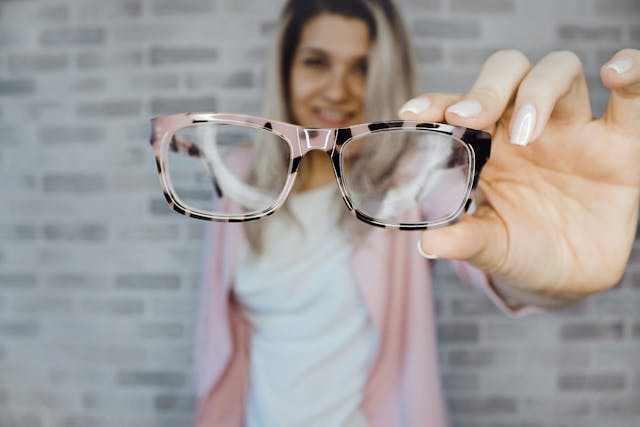






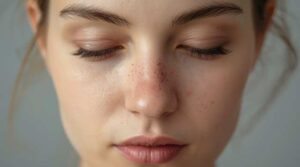

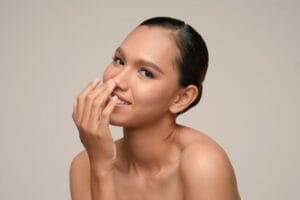
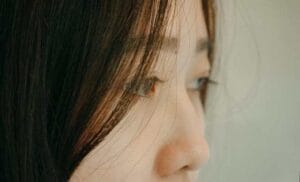
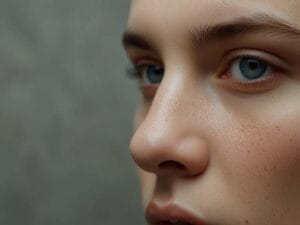
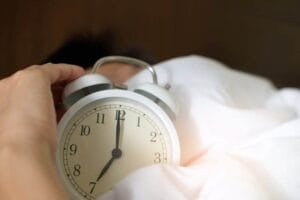
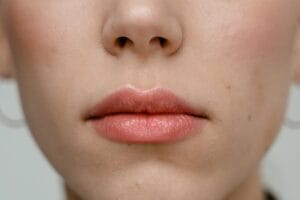
Post Comment